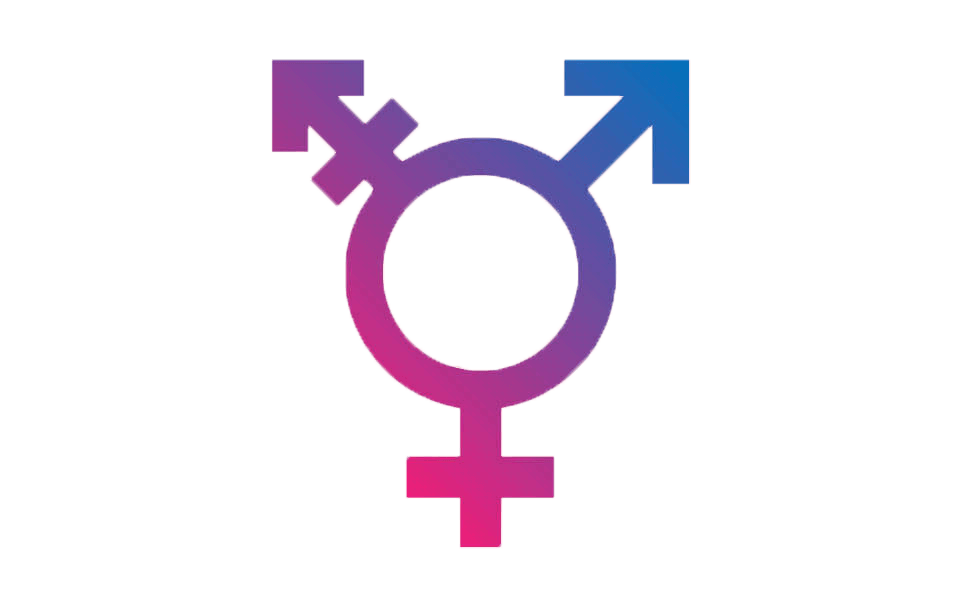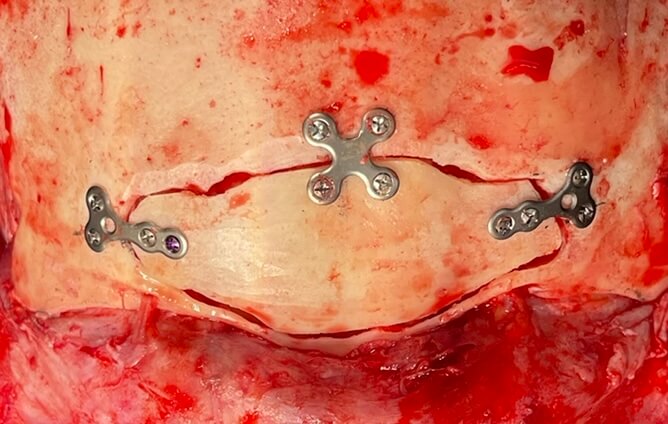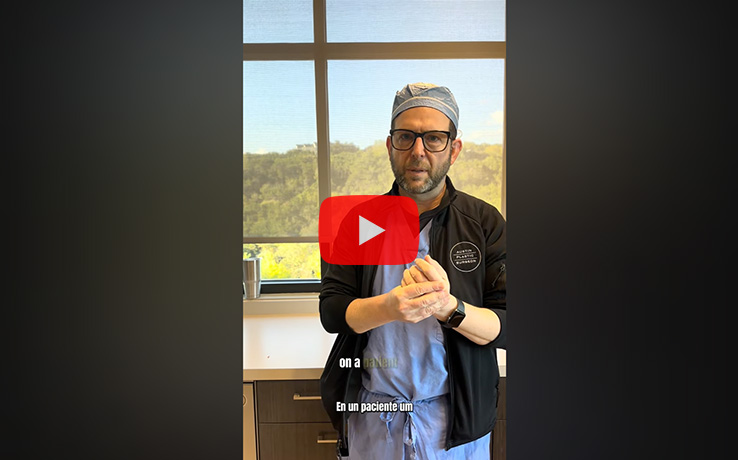
Facial Feminization Surgery (FFS) refers to a combination of procedures used to transform a face with masculine features to one that is feminine. The most common procedures include hairline lowering (forehead shortening), brow ridge/brow bossing/forehead bone reduction, brow lift, cheek augmentation, buccal fat pad reduction, fat grafting, mandible (jawbone/chin) contouring, rhinoplasty, and thyroid cartilage reduction (also known as Adam’s apple reduction, trach shave, or tracheal shave).
Not every patient wants or needs all of these procedures, but many patients undergo more than one. Many of the procedures are naturally easy to perform together and have a synergist effect on a larger region of the face in comparison to independent features. During a consultation, Dr. Weinfeld will spend time listening to and understanding a patient’s priority and goals to arrive at a surgical plan in a collaborative fashion with his patients. Goals for facial feminization are very patient-specific, so hearing what is important to the patient is extremely important and a major focus of all consultations.
What IS Upper Face FFS ?
An area of almost universal interest in the trans women seeking FFS is the forehead, specifically the forehead ridge. Eyebrow shape and position are also important features to address. Many trans women also see a change in the inter-related trio of the length of the forehead, the shape of the hairline, and the position of the hairline. The forehead or brow ridge will be addressed first.

Type 3 Cranioplasty – For reduction of a significant forehead Ridge. This technique requires burring away some of the bone but also making a cut into the bone repositioning it further back to flatten the ridge. The cut segment is then secured in place with thin metal plates and screws.
The Type 3 Cranioplasty – A Critical Appraisal
A Type 3 cranioplasty is a forehead contouring procedure that has been popularized by some surgeons. It is by no means the only way to address the brow ridge, and not all patients need that technique. By comparison to my preferred alternative, the Type 3 approach is more invasive and doesn’t fully treat the difference between a male and a female forehead. Often, male foreheads have a brow ridge in the bottom part and a depression or slope backward in the mid and upper part. A Type 3 cranioplasty only brings the ridge back to the lowest part of the forehead, which may be a non-feminine depression. The Type 3 technique does not address the fact that, while female foreheads should be smooth (i.e., no brow ridge), they still need to be full, round, and not sloped back. Dr. Weinfeld’s preferred method addresses these elements of the feminine forehead.
Forehead Contouring Preferred Method – Addition Subtraction Forehead Contouring (ASFC)
Dr. Weinfeld developed the Addition Subtraction Forehead Contouring (ASFC) technique as an alternative to the Type 3 cranioplasty. His goal was to develop an approach to FFS for the forehead that was less invasive and more comprehensive. ASFC is less invasive because it does not require cutting into the frontal sinus, and it is more comprehensive because it addresses both elements of the male forehead that need to be modified in the transformation to a female forehead. The brow ridge needs to be lowered, and the depression above it needs to be filled. In the ASFC technique, fat grafting is used to fill the depression (Addition), and a burr is used to flatten the ridge (Subtraction). The balance of adding and subtracting volume and contour with precision yields a more naturally feminine forehead that is rounded instead of flat and sloped, as can sometimes occur with the Type 3 approach.
Another benefit is that Addition Subtraction Forehead Contouring (ASFC) can be performed endoscopically; thus, a coronal or pretrichial incision is not required. A coronal incision is one across the top of the head. A pretrichial incision is one just at the frontal hairline. This is the incision that is needed for hairline advancement (forehead shortening). But not every patient wants or needs a hairline advancement, so not all patients desiring a femininely contoured forehead need a pretrichial incision. The endoscopic ASFC technique requires only small incisions (often less than ⅔ inch) that are well-hidden in the hair of the scalp. A guarded endo burr is used under direct endoscopic visualization to reduce the ridge in the lower part of the forehead. The burring of the bone can be combined with an open pretrichial incision when hairline advancement is planned or in patients who want the lateral orbital bone reduced. That cannot be done endoscopically.
Prior to doing that, fat is injected under the skin in the depression or dip that exists in most masculine foreheads just above the ridge. Fat is removed from parts of the body where there is excess. The abdomen and waist are often good donor sites because fat removal there can narrow the waist, which adds to a more feminine body shape. Often, women seeking FFS benefit from fat grafting to the temples. Adding fat there creates a more youthful appearance, and it reduces the apparent projection of the lateral orbital bones. Smoothing this area further projects femininity. FFS often involves fat grafting to the lower part of the face. That will be discussed elsewhere.
Can Unsatisfying Type 3 Cranioplasty Results Be Revised?
Yes. Dr. Weinfeld has experience and success revising and improving Type 3 Cranioplasty results that did not deliver the results patients desired. The ASFC technique can be used to enhance forehead that were not fully contoured by prior Type 3 cranioplasties.
Lower Face
Dr. Weinfeld has observed and strongly believes that relative facial volumes are an important factor in creating a gendered facial appearance. Feminine faces have more volume in the upper face relative to the lower face, and, in comparison, masculine faces have more volume in the lower face relative to the upper face. Regarding the upper face, forehead ridge treatment represents a small reduction in volume, but this is balanced with the feminizing effect of fat grafting to the forehead and temples, which adds volume. These techniques in the upper face work synergistically with lower face volume reduction to create a whole facial volume ratio that is feminine.
The three main lower face volume reduction procedures are:
- Jaw and chin contouring
- Buccal fat pad removal
- Liposuction of the neck
Jaw and Chin Contouring
Jaw and chin contouring are approached through incisions within the mouth. A burr is used to reduce the gonial angles (side angles of the jaw) and to reduce and shape the chin. The gonial angle flares outward in the male face. Reduction of those projections reduces jaw bulk and narrows the lower face, which are both feminizing effects. The male chin is larger than the female chin and more square in shape. A burr can be used to simultaneously reduce the size of the chin and provide a rounder, more feminine shape. When the chin is exceptionally large, precise cuts in the bone are needed to remove a wedge for a more powerful reduction.
Buccal Fat Pad Removal
The second lower facial volume reduction procedure is buccal fat pad reduction. The buccal fat pads are collections of fat in the center, fleshy part of cheeks. A portion of these fat deposits is removed through small incisions within the mouth. This narrows the central cheeks, giving a thinner, more feminine, and subtly puckered appearance. This can enhance cheek contours and jawline contours as well without making the jaw look larger.
Liposuction of the Neck
Liposuction of the neck is a powerful tool for lower facial sculpting and volume reduction. Liposuction is the precise removal of fat through small surgical tubes placed under the skin. The process of FFS is enhanced by highlighting the transition from the neck to the face by removing fat from beneath the chin and jawline. Generally, fat should not be removed from the area immediately around the Adam’s Apple (thyroid cartilage) to avoid making it appear more prominent. In fact, many trans women undergo a procedure to make the Adam’s Apple less noticeable.
Tracheal Shave
The common term for reduction of the Adam’s Apple is Trach Shave (Tracheal Shave). The medical term for the Adam’s Apple is thyroid cartilage because this ring-like structure, a part of the neck’s breathing tube, lies close to the thyroid gland. In people assigned male at birth, the front surface of the cartilage sticks out more and has a sharper point than in females. Reducing its visibility is something that helps feminize the neck. Reduction of the projecting cartilage is performed through a small incision higher up on the neck. The scar from this is generally hard to see because it lies in the shadow of the chin. The vocal cords are attached to the undersurface of this cartilage ring. Over-reduction of the cartilage should be avoided in order to prevent creating slack in the cords, which can lead to deepening of the voice.
Lip Enhancement
There are other lower facial procedures that are often a part of FFS. Upper lip lift is one that many trans women seek. This involves removing a strip of skin above the upper lip just under the nose. The effect is shortening the lip to show more of the teeth and rolling up the red part of the lip, thus making it look plumper. Upper lip lifting is often combined with fat injections for a fuller, more feminine appearance. The lower lips are also frequent targets for fat grafting.
Does Dr. Weinfeld Perform Other FFS Procedures
Yes. This section is not a complete list of the FFS procedures performed by Dr. Weinfeld. If you do not see a procedure listed for which you have interest, please contact us.

Get In Touch
Patients respond to Dr. Weinfeld's expertise and caring patient focused approach. If you have any questions about a procedure or are ready to schedule a consultation, please call or fill out the form below.
Address
This facility is only for cosmetic and non-insurance based procedures. If you seek insurance based treatments or reconstructive procedures, please search for Dr. Weinfeld in his other facility.
Phone: 512-559-1376
Connect with us

